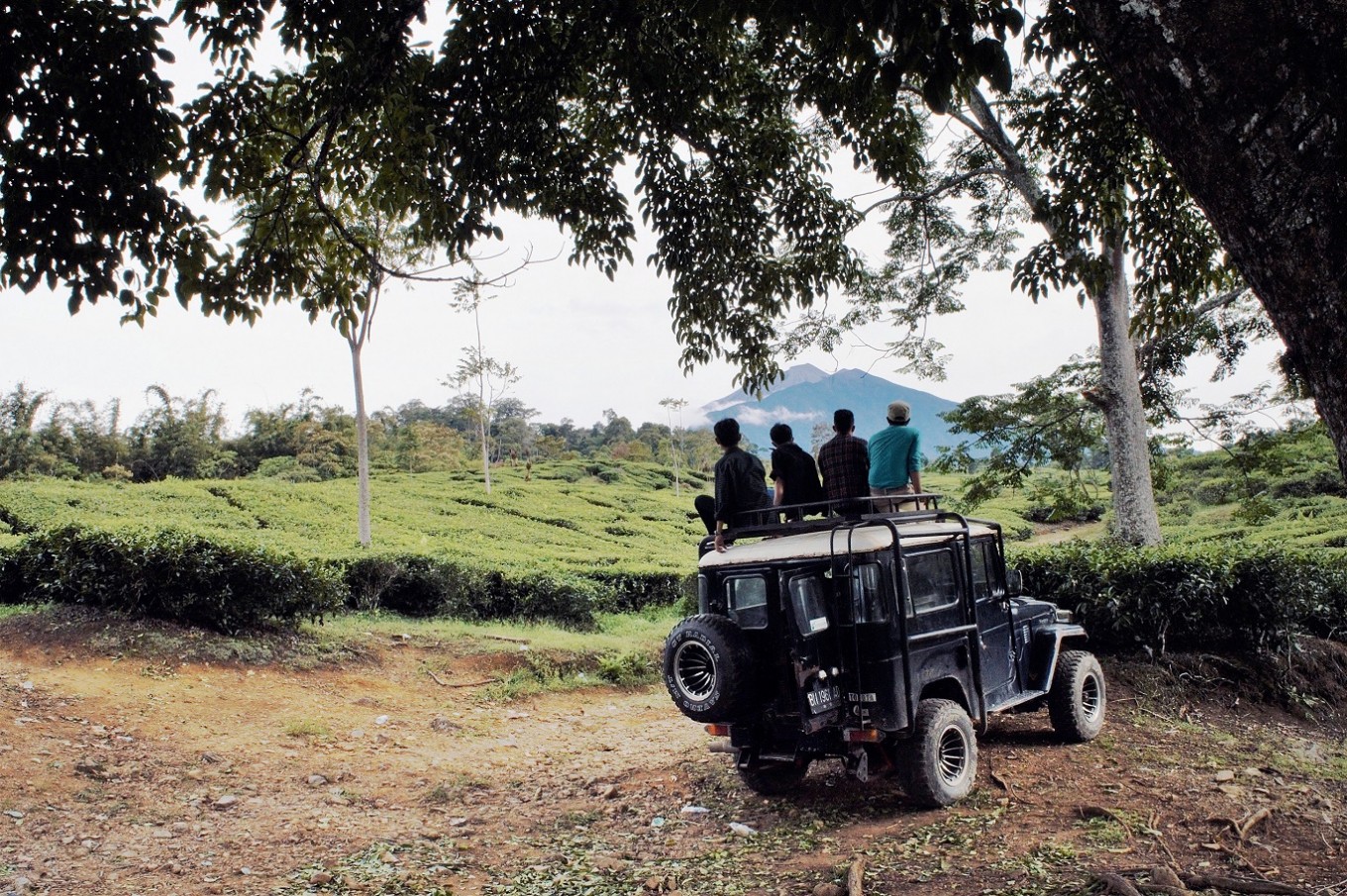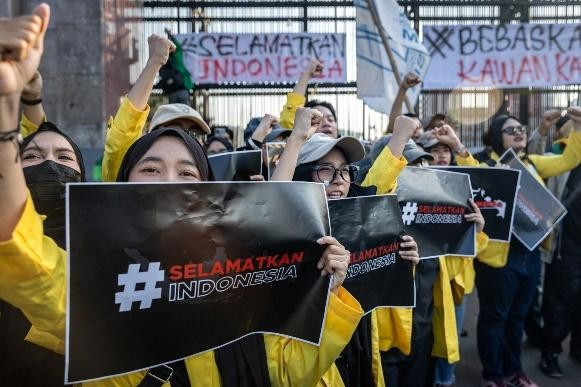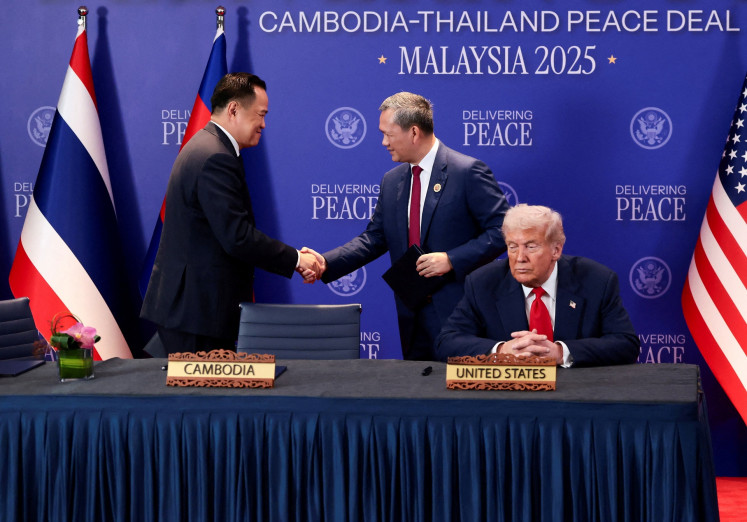Popular Reads
Top Results
Can't find what you're looking for?
View all search resultsPopular Reads
Top Results
Can't find what you're looking for?
View all search resultsSaving world heritage of Sumatra's rainforests
Even at a global level, its exceptionality is evident, as host of over 4,000 plant species, 450 species of birds and 180 species of mammals.
Change text size
Gift Premium Articles
to Anyone
T
oday’s List of World Heritages in Danger includes Indonesia’s Tropical Rainforests Heritage of Sumatra (TRHS), which encompasses three national parks along the island: Gunung Leuser, Kerinci Seblat, and Bukit Barisan Selatan.
Protection of the world’s cultural and natural heritage was among topics at last month’s meeting of the World Heritage Committee under the United Nations Educational, Scientific and Cultural Organization (UNESCO).
The Sumatra site of rainforests was inscribed into the World Heritage List in 2004 given its exceptional beauty, significant on-going ecological evolution and development of terrestrial, fresh water, coastal and marine ecosystems and communities of plants and animals, including threatened species of outstanding universal value.
The exceptionality of TRHS has found no comparison in Indonesia. Even at a global level, its exceptionality is evident, as host of over 4,000 plant species, 450 species of birds and 180 species of mammals.
Nonetheless, road development in the area, along with failure in law enforcement, illegal logging, land encroachment, poaching, and other ecological degradation, prompted the International Union for Conservation of Nature (IUCN), a network of green groups, to recommend the Sumatra rainforests on the List of World Heritage in Danger in 2011.
To restore TRHS, an inter-agency coordination was formed at the central government level to orchestrate efforts at policy level.
Yet road development, poaching, and land encroachment etc persist. Those challenges are intermingling and formidable. Poverty in TRHS remains evident, prompting destructive acts. Building physical connectivity in remote areas to encourage economic activities faces environmental risks.
Developing and strengthening synergy is easier said than done. The most formidable challenge usually comes from different priorities of ministries or institutions. At the local level, things are worse.
Restoring TRHS affirms linkages between nature, climate, and disaster. Protecting nature helps prevent or lessen impacts of natural disaster; thus saving financial and social costs particularly as Indonesia faces frequent hydro-meteorological disasters.
If restored properly, TRHS can also be developed into an interesting eco-tourism destination. Indonesia already has best practices in managing eco-tourism destinations, some supervised under UNESCO. Synergy is again a necessity.
There are also international implications behind the urgency of restoring TRHS; which is not only Indonesia’s national property but clearly a world heritage.
While the World Heritage Convention recognizes the sovereignty of state parties to world heritage, the international community must cooperate with states in protecting such heritage. The Convention accords states with responsibility to provide information on conservation of world heritage in their territories, and prevent deliberate measures that can damage the heritage.
Thus once a national cultural or natural property is listed on the World Heritage List, states can no longer develop policies impacting the property without the scrutiny of the international community.
Since it is a world heritage, national efforts for conservation and/or preservation of TRHS resonate very well with Indonesia’s international commitment to nature, for instance in reducing emissions.
Restoring TRHS will also help realize Indonesia’s commitment to prevent forest fires in Sumatra.
Local communities have reportedly yet to sufficiently benefit from TRHS and its world status. This kind of complexity is not unique to TRHS. The government solutions to address those challenges, by developing harmony between social, environmental, and economic aspects, could serve as model for addressing challenges in other natural or cultural property.
The interplay between those factors must be understood by Indonesia, a country with eight UNESCO world heritages.
Failure to restore TRHS will damage Indonesia’s credibility in its commitment to nature. It also could render its future efforts in nominating other national property into the World Heritage List more difficult.
***
The writer works at the Foreign Ministry’s directorate for socio-culture affairs and international organization of developing countries. This is a personal view.
---------------
We are looking for information, opinions, and in-depth analysis from experts or scholars in a variety of fields. We choose articles based on facts or opinions about general news, as well as quality analysis and commentary about Indonesia or international events. Send your piece to academia@jakpost.com.










